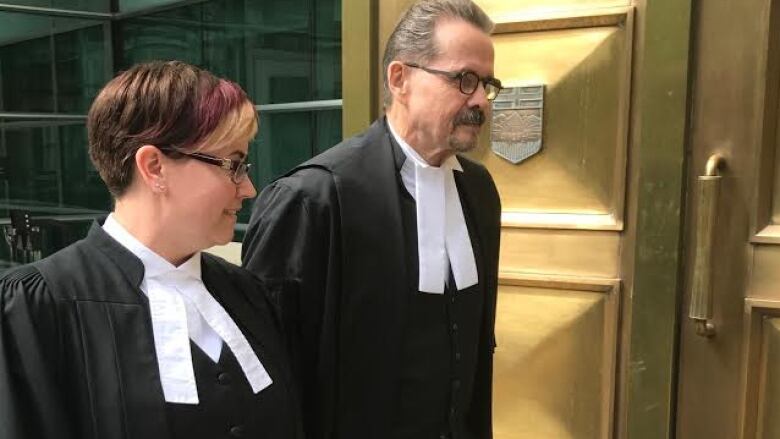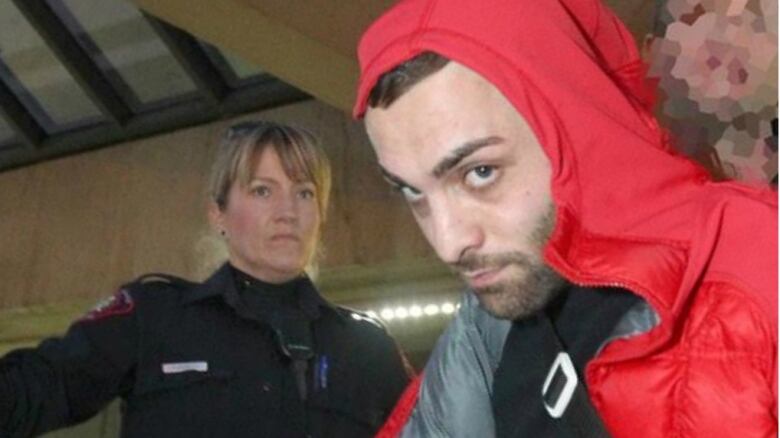Major gang trial at risk over use of controversial cellphone surveillance technology
Barakat Amer and Tarek El-Rafie are supposed to go to trial on 17 attempted murder charges next year

Charges against two gangsters heading to trial on 17 counts of attempted murder are at risk of being dropped because of controversial technology used by the Calgary Police Service (CPS) during its investigation.
MDIs (Mobile Device Identifiers), also known as Stingray devices, are a type of cellphone surveillance technology whichmimics a cellphone tower.CPS revealed in April that it possesses one such device.
In recent years, RCMP have been so secretive about their use of the devices duringinvestigations thatin certain casesprosecutors have offered extreme plea deals and might have stayed charges rather than disclose information related to thetechnology.
Now it appears a major gang trial in Calgary is facing the same risk.
Operation Hybrid
One year ago, Calgary police announced eight men faced dozens of charges following Operation Hybrid, a complex organized crime investigation during whichBarakat Amer and Tarek El-Rafie were the targets of several MDI deployments.
Police say they gained no relevant evidence against the pair by using the technologyso they destroyed all of the data.
Amer and El-Rafie's lawyers say if prosecutors can't hand over information related to the MDI deployments, charges against their clients should be stayed.
That informationcomes from arguments presented at Amer and El-Rafie's pre-trial motions, wherelawyers Kelsey Sitar and Clayton Rice successfully argued they are entitled to certain information related tothe MDI deployments.

Prosecutors Brian Holtby and Adam May told the court police destroyed all data gathered in the deployments because it was deemed to be "irrelevant."
"[CPS] did not obtain any evidence the Crown would seek to tender with respect to the applicants," said May.
Sitar, representing El-Rafie, argued the Crown did not prove the destroyed data was irrelevant to defence and said the real issue is "CPS' desire to keep secret an investigative technique that is no longer a secret."
Crown ordered to produce MDI witness
Court of Queen's Bench Justice Glen Poelman agreed Sitar and Rice are entitled to some information related to the MDI deployment targeting their clients.
The defence lawyers have been granted the right to question the CPS officer involved in using the MDI regarding its features and the circumstances which may or may not affect its use.
After Poelmandelivered his decision,Holtbyinvoked a section of the Canada Evidence Act that allows the Crown to argue the disclosure ofcertain investigative techniques are contrary to public interest.
More argumentswill take place in a closed-door hearing where defence lawyers will likely be represented by a court-appointed lawyer.
The RCMP has also been notified to determine if they want to make arguments against the release of information related to the MDI.
Controversies
The technology is controversial because in at least one Canadian case, Crown prosecutors have chosen to take watered down plea deals rather than disclose information.
Last year, six Montreal gangsters originally charged with first-degree murderpleaded guilty to conspiracy to commit murder, and another to accessory after the fact,after the Crown declined todisclose details of the technology to defence lawyers.
- 7 accused in Salvatore Montagna killing strike plea bargain
- Prosecutions against dozens of suspected mobsters halted, but Crown vague on why
In March, Quebec prosecutorsstayed 36 charges against suspected members of the Montreal Mafia. The Crown said that decision was based on "many factors," but the move didraise speculation prosecutors were concerned about evidence gathered using MDI devices that would have to be handed over to defence lawyers.
Specific information sought
Sitar and Rice originally asked for the following information:
- How many devices CPS has in its possession
- Manufacturer make and model
- Signal strength and range of MDI deployed
- Location of deployment and its travel path
- Whether deployments occurred near remand centre or courthouse
- Description of all default settings on the MDI when it was deployed
- Does the MDI have capability to perform functions:
- Fish hawk (remote triggering of cellphone microphones for eavesdropping capabilities),
- Porpus (remote surveillance of text messages)
- Denial-of-service (Jamming cell signals on a particular device)
- Information related to meta data collection tools (date, time, location of calls)
- Creation of falsified communications (texts, calls)
- Metadata collection tools
- Ability to extract encryption key information
- Research done by police on MDI devices
- Information on destruction/deletion (how long is data kept before it's destroyed, how it's destroyed, who destroyed)
RCMPuse
Earlier this year, the RCMP revealed it owns 10 MDI devices.
- Cellphone surveillance technology being used by local police across Canada
- RCMP reveals use of secretive cellphone surveillance technology for the first time
Calgary police declined to comment on this story because the case is before the courts, but during a CBC News investigation in April, Ryan Jepson, the head of Calgary police's technical operations section,revealedfor the first time that CPS has owned an MDI device since 2015.
Jepson said a small group of trained operators used the device in six investigations in 2015, and eight in 2016.
He said the MDI is not used to track a suspect'slocation or collect data on their communications;only to identify their devices.
Lawyers continue to deal with other pre-trial applications while they work out the details of the in-camera hearing when it will take place and who will be participating.












_(720p).jpg)


 OFFICIAL HD MUSIC VIDEO.jpg)
.jpg)



























































































